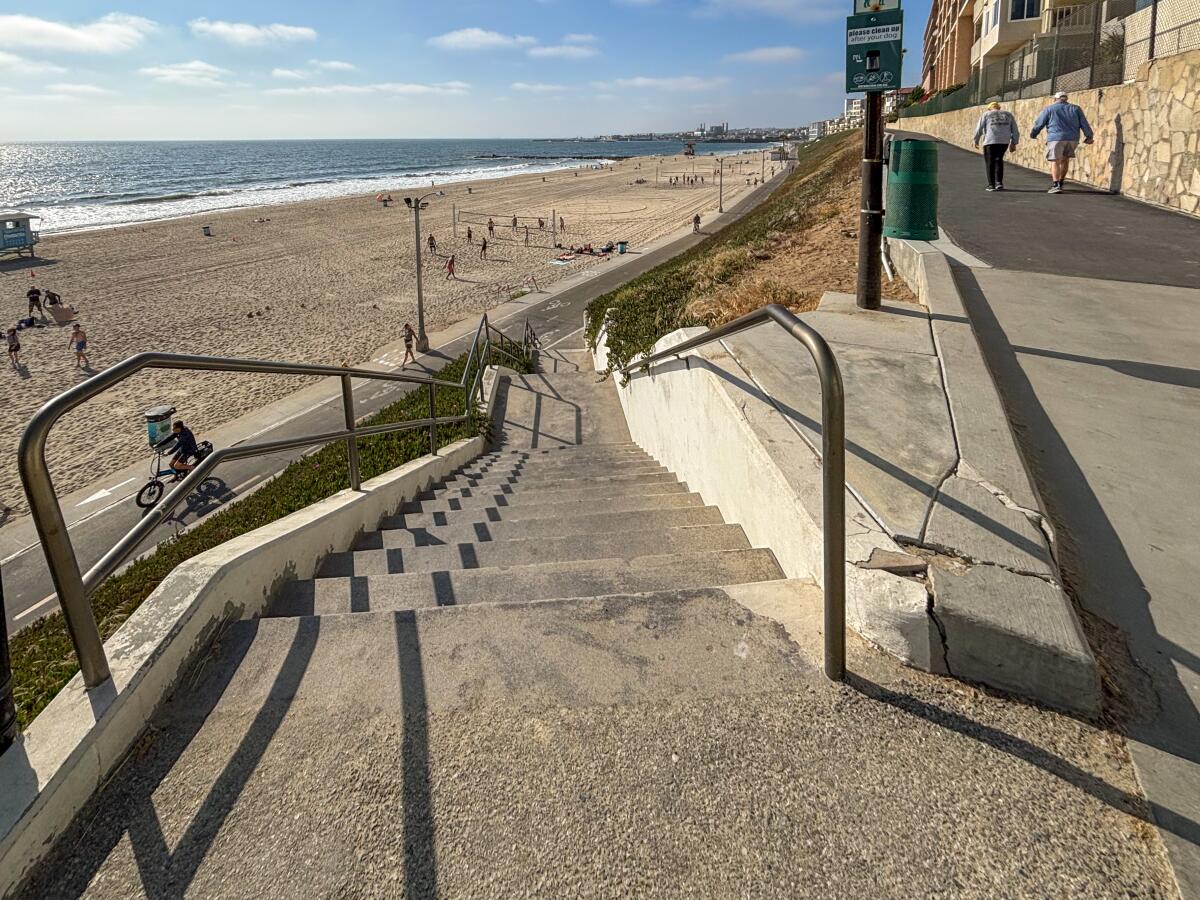Newsom’s order to clear encampments could backfire
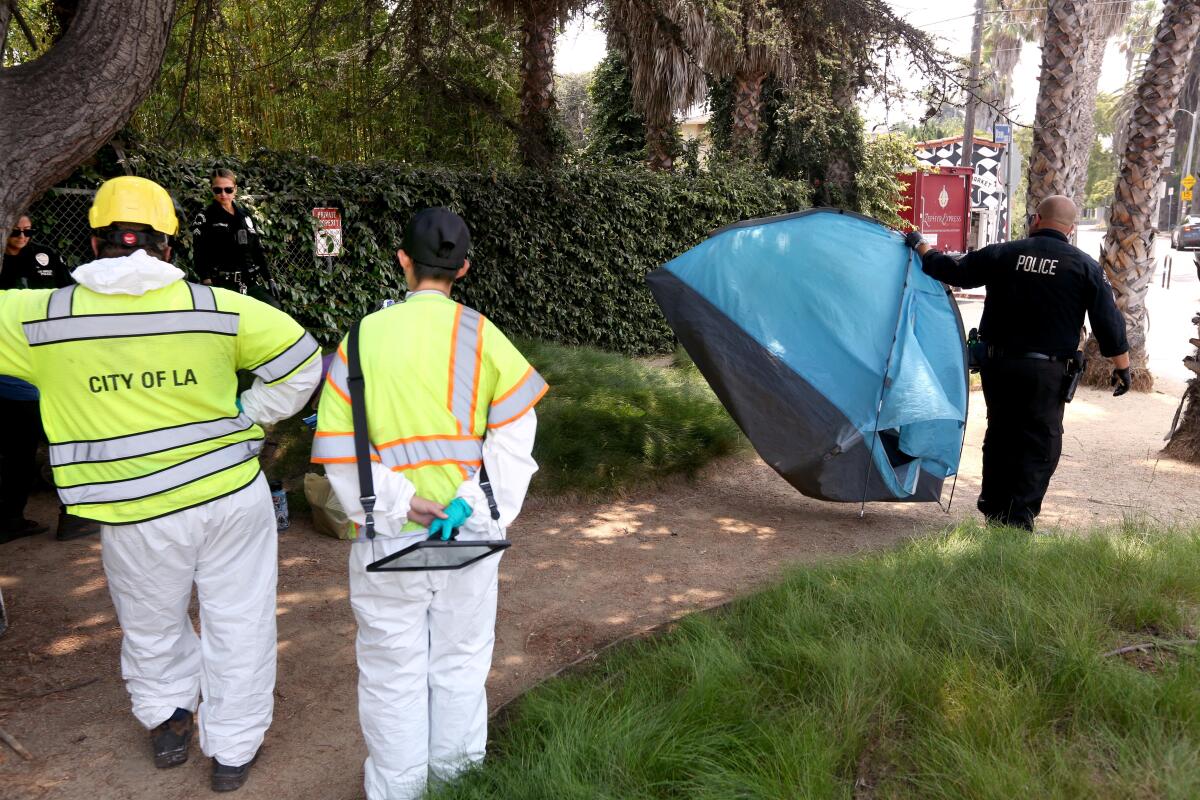
Good morning. It’s Friday, July 26. Here’s what you need to know to start your day.
- Gov. Newsom has ordered homeless encampments to be cleared from state land with “urgency and humanity.” Critics call it “cruel” and ineffective.
- A man has been arrested on suspicion of arson in relation to California’s largest wildfire of the year.
- 10 L.A. staircase walks with breathtaking ocean views.
- And here’s today’s e-newspaper
You're reading the Essential California newsletter
Our reporters guide you through our biggest news, features and recommendations every morning
You may occasionally receive promotional content from the Los Angeles Times.
How Newsom’s order to clear encampments could backfire
The ripple effects of the U.S. Supreme Court’s Grants Pass ruling grew into a wave in the Golden State this week.
Gov. Gavin Newsom issued an executive order Thursday directing state agencies to clear “dangerous” homeless encampments from state land, saying they pose health and safety risks.
Counties and cities are not subject to the order, but Newsom encouraged them to follow the state’s lead.
It’s the latest action from the increasingly perturbed governor, who’s been pointing fingers at local jurisdictions for a lack of progress to reduce homelessness.
“There are simply no more excuses,” Newsom said in a statement. “It’s time for everyone to do their part.”
Newsom’s new order is facing criticism from civil rights groups and advocates for unhoused people, along with members in his own party, who argue taking down tents won’t fix the crises that have made California the unsheltered homelessness capital of the U.S.
And given that cities across the state have more unhoused people than shelter beds, where are those who are pushed out of encampments supposed to go? The state has an estimated 181,000 homeless people, 70% of whom are unsheltered.
What does the order do?
Under Newsom’s order, state agencies will assess encampments to identify any “imminent threat to life, health, safety or infrastructure.” For those at highest risk, the people living in the camp would be given “as much advance notice to vacate as reasonable under the circumstances,” according to Newsom.
For encampments that state workers determine do not pose any imminent threats, unhoused residents would be given “at least 48 hours” to leave. State officials are also instructed to contact service providers on behalf of camp dwellers and help store their belongings for at least 60 days.
In his order, Newsom writes that local governments’ efforts to sweep encampments had been “stymied…by lawsuits and injunctions.”
Newsom’s office cited the Grants Pass ruling in a press release about his order, writing that “local governments now have the tools and authority to address dangerous encampments and help provide those residing in encampments with the resources they need.”
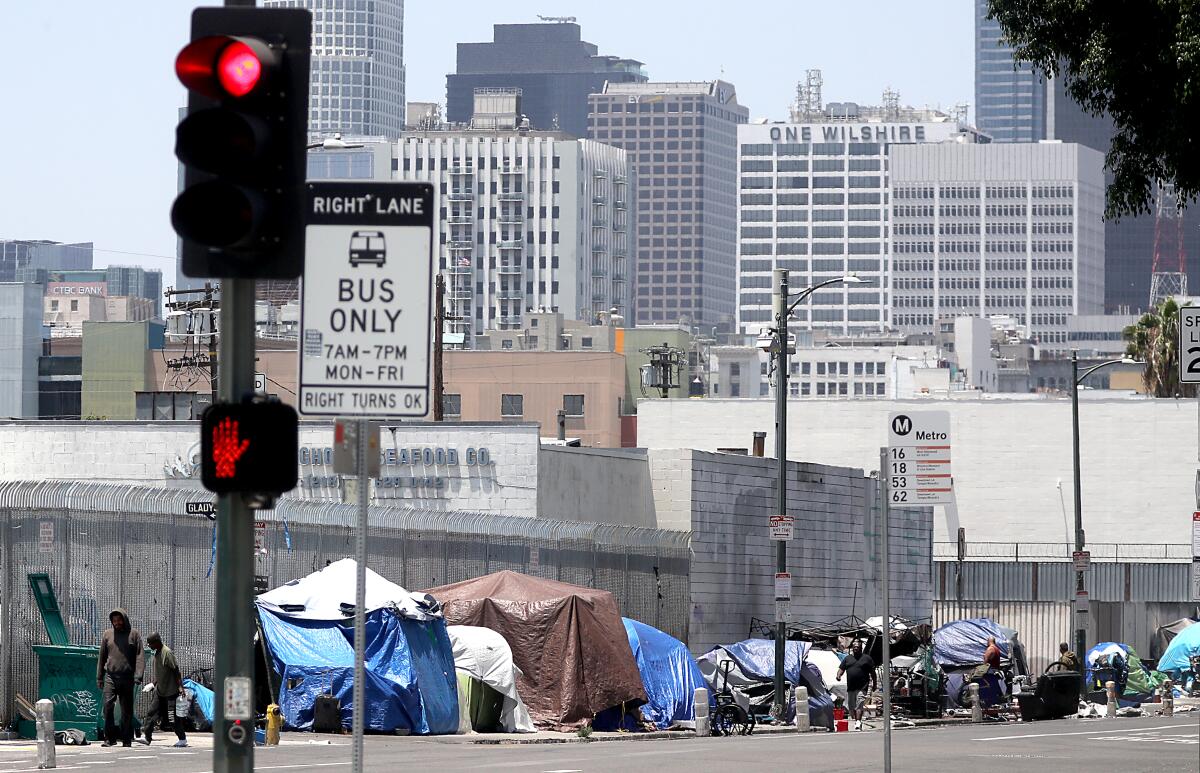
Newsom’s order faces scrutiny
Newsom’s order encourages local governments to take advantage of state funding for housing and homelessness intervention programs and move with urgency “to humanely remove encampments from public spaces.”
Earlier court rulings deemed it unconstitutional for cities to clear encampments if people had no other options for shelter.
The Public Policy Institute of California crunched federal housing data this May and determined that none of the state’s 44 regional homelessness response networks “has sufficient shelter for its homeless population.”
But the Grants Pass ruling removed that shelter contingency. Now critics fear that without requiring safe alternatives — emergency shelters and interim housing that ideally puts unhoused people on a path to permanent housing — the crisis will deepen and cause more harm.
“There’s no such thing as a humane clearing of an encampment,” said Anthony Prince, lead counsel for the Sacramento Homeless Union. “People are traumatized. The shelters are full and there’s no place to go.”
Prince vowed that his union would be stepping up legal challenges. The group fought successfully to turn an encampment in Sacramento into a city-sanctioned, self-governed community, though it’s been a messy fight to secure services and pathways to housing for residents.
Margot Kushel, professor of medicine and director of the Benioff Homelessness and Housing Initiative at UC San Francisco, worries that Newsom’s order signals that the Grants Pass decision “has opened the door to jurisdictions leaning into their worst instincts.”
Criminalizing homelessness does nothing to reduce homelessness, Kushel argued, but will likely worsen it. Meanwhile, the state’s crisis-level lack of affordable housing puts even more Californians at the edge of homelessness.
“We talk a lot about how much we spend on homelessness, but…we [also] have a deep structural deficit in this state of a million units” of affordable housing, she said.
The ACLU of California slammed the order, saying the state has opted to “address a systemic problem with a superficial fix.”
“Newsom’s plan to displace and dispossess unhoused people, even though the state does not have enough housing, is a cruel tactic that only masks the problem,” the ACLU’s statement reads.
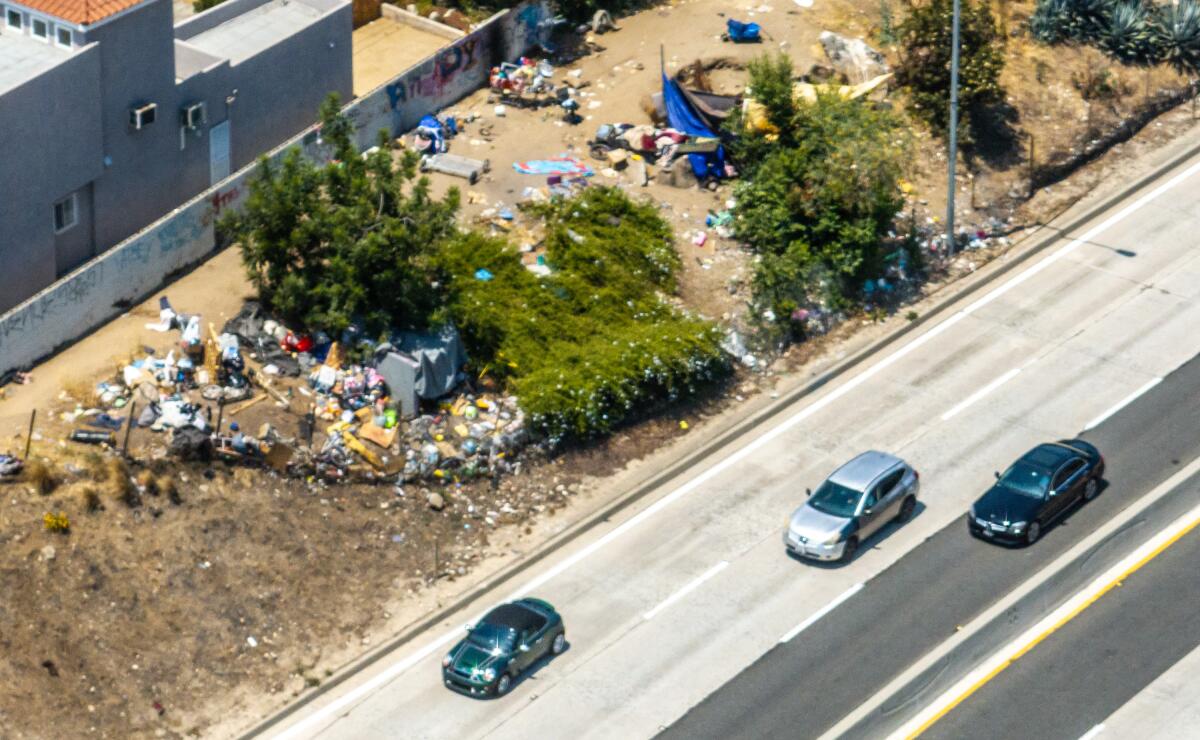
The governor also faced criticism from fellow Democrats, including Assemblymember Alex Lee (D-San Jose), who called encampment sweeps ineffective, fiscally wasteful and “morally wrong.”
“You get your highway off ramp clean for a moment only,” Lee wrote in an X post. “Without meaningful services and housing, all sweeps do is [make] a prominent inequality less visible.”
How will cities respond?
There’s also concern that the SCOTUS ruling and Newsom’s directive will lead cities to push unhoused people into neighboring cities, as allegedly happened in Los Angeles last month. Los Angeles Mayor Karen Bass previously criticized the Grants Park ruling, writing in a statement that it “must not be used as an excuse for cities across the country to attempt to arrest their way out of this problem or hide the homelessness crisis in neighboring cities or in jail.”
“Neither will work, neither will save lives and that route is more expensive for taxpayers than actually solving the problem,” she said.
For Kushel, of the Benioff Homelessness and Housing Initiative, the lasting impact of Newsom’s order will be borne out in the metrics.
“Did they move people, really, into shelter — and did they move them from shelter into permanent housing? That’s what we hold people accountable for,” she said. “If we move people from one place to another place, that doesn’t meet our goal.”
Today’s top stories
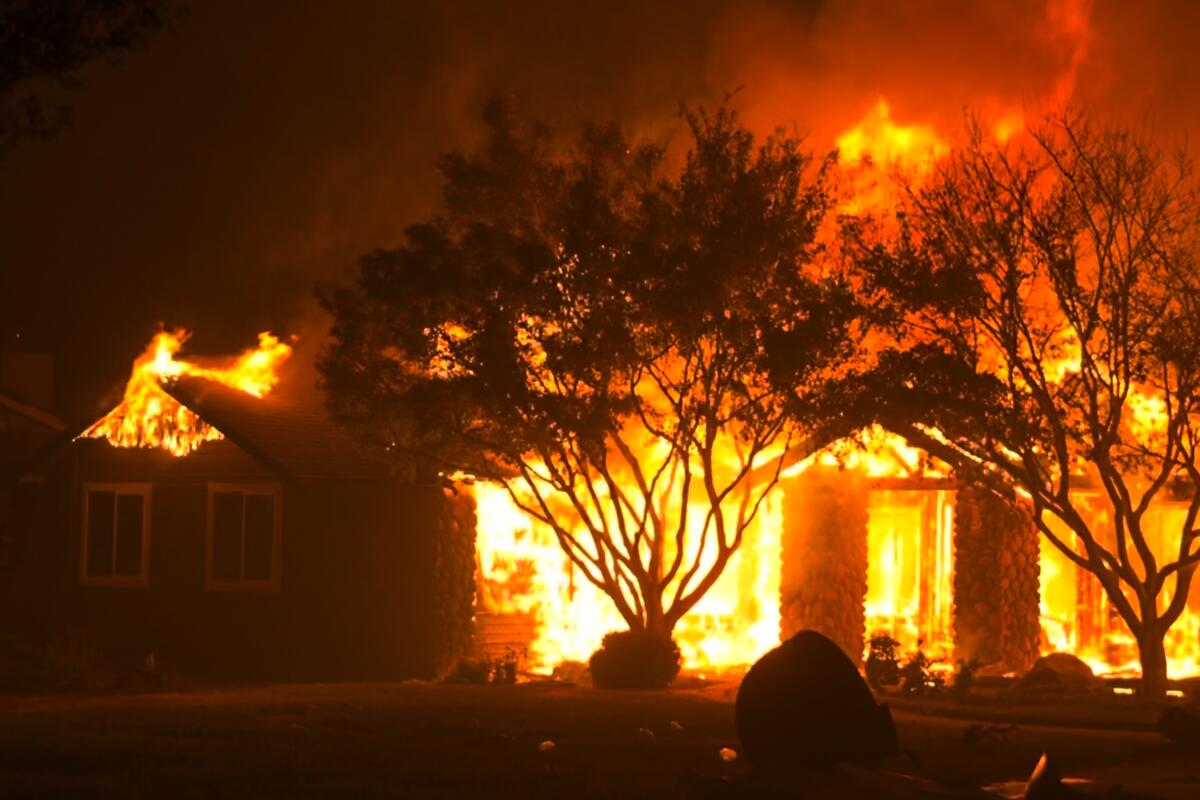
Wildfire season
- The massive Park fire was sparked by a man pushing a burning car into a gully, officials say
- California wildfires have burned more than 20 times as much land as last year.
- Track California wildfires as they happen.
Latest on the 2024 presidential election
- Republicans frame Kamala Harris as a failed ‘border czar.’ What did she really do on migration as VP?
- Early stumbles set a template for Harris. Allies now say vice president has figured out the job.
- Barack and Michelle Obama just endorsed Harris: ‘She gives us all reason to hope’
- The Vice President is still the underdog against Trump. These three things could change that.
Homeowners insurance crisis
- The insurance industry will soon have the ability to use wildfire models when setting rates. Homeowners in high risk areas already know how these models have made policies hard to get and hard to afford.
- A class-action lawsuit accuses FAIR plan of selling home policies with subpar fire coverage
A news crisis in California
- California’s news industry is in steep decline. Here’s what is at stake.
- This California city lost its daily newspapers. It faces a crisis over what comes next.
- California is trying to force Big Tech to pay for news. What can we learn from Australia and Canada?
More big stories
- Southwest Airlines will assign seats for the first time since it was founded more than half a century ago.
- California Supreme Court upholds Prop. 22, ending the legal saga over status of gig drivers.
- Video game actors are going on strike after contract talks fail over AI terms.
- Benched by the NBA, Warner Bros. Discovery boss David Zaslav faces tough questions
Get unlimited access to the Los Angeles Times. Subscribe here.
Commentary and opinions
- Gustavo Arellano: The lawyer who thinks he can free street vendor activist Edin Enamorado.
- Mary McNamara: Whatever happens at the Olympics, Simone Biles has written a comeback story for the ages.
- Dylan Hernández: How Shohei Ohtani could snap the Dodgers out of their complacency.
Today’s great reads
‘It was sexy, it was fun’: Why these waterbed devotees never gave up on the jiggle. Waterbeds make up less than 2% of all mattress sales today, but a handful of remaining enthusiasts are holding on to their water-filled treasures for as long as they can.
Other great reads
- Risking life and limb for glory: Olympic surf competition to be held on the world’s ‘heaviest wave.’
- How California teen Chloe Cole emerged as a leader of the ‘detransition’ movement — and a right-wing icon.
- He’s the guy who buys equipment from failed restaurants. Yeah, he’s busy.
- 1984 Olympic Arts Festival all but reinvented L.A. Why the 2028 Games could do the same
How can we make this newsletter more useful? Send comments to [email protected].
For your downtime
Going out
- 🌅 10 L.A. staircase walks with breathtaking ocean views.
- 🧑🎤 It’s like Vegas’ Sphere — kinda. 7 things to know about L.A.’s otherworldly new venue.
- 🍝 23 of the best restaurants and bars for your San Diego weekend getaway.
- 🎭 ‘Tartuffe: Born Again’ in the American South kicks up its heels at Theatricum Botanicum
Staying in
- 🥤 Plain ol’ water is out. Hydration supplements are in. But do these top 8 brands really work?
- 🧑🍳 Here’s a recipe for Grilled Halibut Soft Tacos With Lime-Garlic Vinaigrette
- ✏️ Get our free daily crossword puzzle, sudoku, word search and arcade games.
And finally ... a great photo
Show us your favorite place in California! We’re running low on submissions. Send us photos that scream California and we may feature them in an edition of Essential California.

Today’s great photo is from staff photographer Allen J. Schaben of a surfer at San Onofre State Beach.
Have a great day, from the Essential California team
Ryan Fonseca, reporter
Defne Karabatur, fellow
Andrew Campa, Sunday reporter
Kevinisha Walker, multiplatform editor and Saturday reporter
Christian Orozco, assistant editor
Stephanie Chavez, deputy metro editor
Karim Doumar, head of newsletters
P.S. For the record: The Friday, July 19 edition of Essential California said that the 605 Corridor Improvement Project included work on a segment of the 101 Freeway. It’s actually the 105 Freeway.
Check our top stories, topics and the latest articles on latimes.com.
Sign up for Essential California
The most important California stories and recommendations in your inbox every morning.
You may occasionally receive promotional content from the Los Angeles Times.

